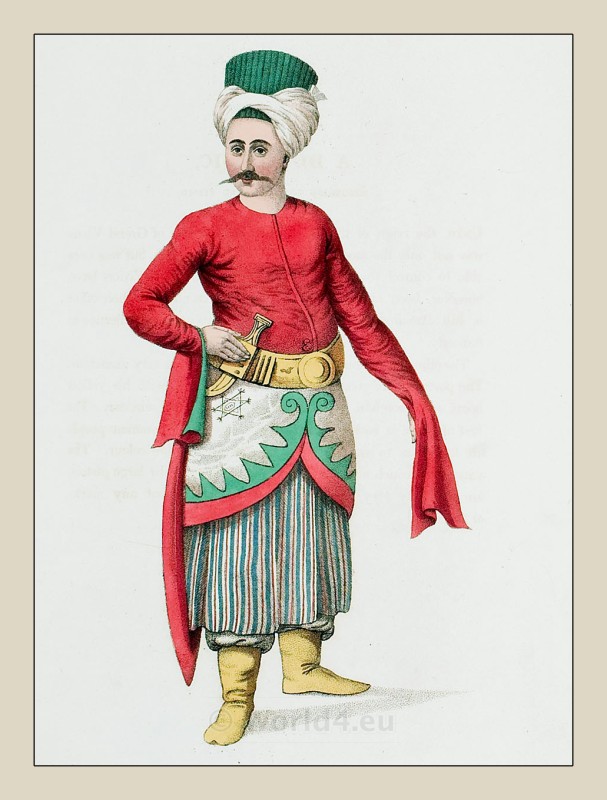An Armenian. Ottoman Empire.
Tag: Octavian Dalvimart
An Ichlogan, servant to the Turkish Sultan. Ottoman Empire.
In the Ottoman Empire, a içoğlan is a young page of the Sultan or a servant of the seraglio recruited by force according to the Devchirmé system. The sultan’s pages were formed in the palace school (Enderûn).
The same term was also used for some members of the Janissaries.
A Domestic. Servant to the Grand Vizier. Ottoman Empire.
A Domestic Servant. The portrait here given is of one in his full dress, with his yellow boots and yataghàn, a sort of curved knife or short scimitar.
A Turk in his chall, or shawl. Ottoman man in traditional dress.
THIS is the dress of a Turk, whenever he ventures abroad on foot: but this, among the higher ranks, is never done in the streets of Constantinople.
A Page of the Turkish Sultan. Head of the Dragomans of the Sublime Gate.
THE Pages of the Sultan, who hold a much more important office than is to be inferred from what we mean by the same name, at least they often arrive at the most important dignities, are appointed in a very peculiar manner.
The Mufti of Istanbul or Chief of the Religion. Ottoman Empire
The Mufti of Istanbul or Chief of the Religion. Ottoman Empire.
A Hamal or common porter at Istanbul. Ottoman Empire
A Hamal or common porter. Historical Ottoman Empire officials and ethnic groups. THESE men are very numerous, particularly at Pera (Beyoğlu), where they are employed in reming the various goods… Read More
Subaltern Officer of the Janissary. Ottoman Empire Costume.
Subaltern officer of the Janissary corps. Ottoman Empire.
Women of the Andros Island. Ottoman Empire.
THE dress of the females of this island, like most of those in the other islands of the Archipelago, is very pleasing and interesting, especially when worn by the young and beautiful.
A Saka or Turkish water carrier. Ottoman Empire Costume.
Water is constantly carried about the streets both of Pera and Constantinople, and the Sakàs carry it in lethern buckets.






